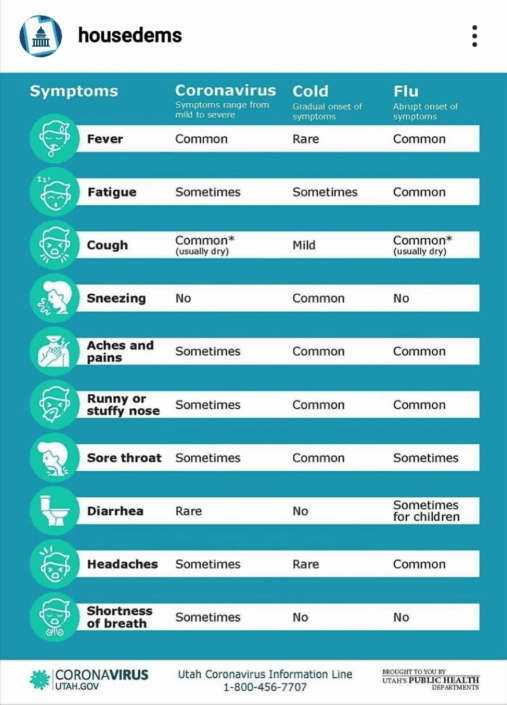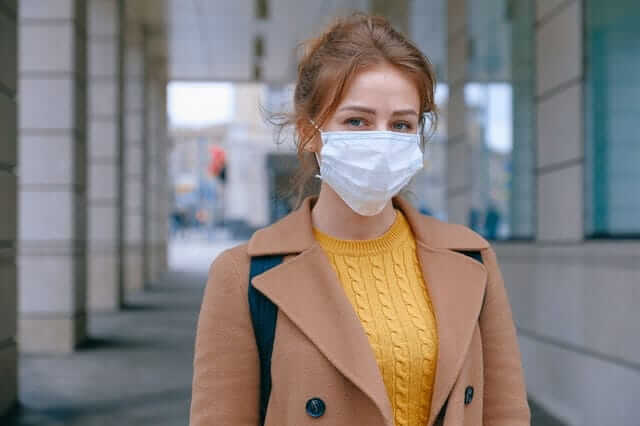What Is The Coronavirus Disease?
With so much information floating around, it can be difficult to identify what is known and what is sensationalized about the coronavirus disease. According to the CDC, coronaviruses are large families of viruses. There are coronaviruses spread among animals, and others spread among people. Occasionally, animal coronaviruses can affect and be spread among humans, which is believed to be the case with COVID-19. The dangers of COVID-19 are that it is very contagious, there is no cure (at the time of writing this article), and that it is a new virus that hasn’t been studied extensively yet. That will change over the next few months though. The common symptoms of COVID-19 are fever, cough, and shortness of breath. to see the full list of symptoms and to see how they compare to the common cold and flu, check out the image below.READ MORE: How Do I Prepare For A Pandemic Outbreak?

How Is COVID-19 Spread?
The coronavirus is an extremely contagious virus that is spreading quickly throughout the world. It originated in Wuhan, China, and now has confirmed cases in most countries globally. Although the CDC is still studying how this specific type of coronavirus spreads, it is known to spread through person-to-person contact. This type of spread has informed the guidelines that the CDC has given us to try to prevent an uncontrollable outbreak. This means that COVID-19 spreads between people who are in close contact with each other, and through respiratory droplets produced when an infected person coughs or sneezes. In addition, it is believed that a person can get the coronavirus disease after touching an infected surface and then touching their own nose or mouth.How Can I Prevent The Spread of COVID-19?
First, to prevent the spread of the coronavirus disease, practice social distancing. Social distancing in simple terms is avoiding coming into close contact with other people (within six feet), except for those in your immediate family with whom you are living. This is wise to do even if you show no signs of sickness, as people can be carriers of the virus with no symptoms. Social distancing is a way to hopefully slow the spread, to save lives, to protect those who are vulnerable, and to avoid overloading our hospitals all at once. Second, avoid travel when possible. The idea of social distancing is to limit your exposure to others and their exposure to you. The more places that you go, the more surfaces you touch, the more of a chance that the virus is being transmitted. (Still even, with no symptoms.) The best thing to do, if possible, is to cancel your travel plans and stay home. Next, wash your hands multiple times per day, especially after using the bathroom, before and after eating, and whenever wiping your nose, coughing, or sneezing. Wash them with soap and water for at least 20 seconds. In addition, use hand sanitizer with at least 60% alcohol throughout the day. Next, disinfect surfaces around your house often, using detergent and water. COVID-19 is contagious in part because of how long it stays alive and transmittable on surfaces. Disinfecting often can help prevent this spread. Last, if you even suspect that you may have the coronavirus disease, self-quarantine in your home and take the necessary precautions to stop the spread. Unless you are experiencing emergency symptoms, such as difficulty breathing, a self-quarantine with a heavy dose of hydration, and self-care should be sufficient for managing the virus. These precautions are to try to flatten the curve of the potential amount of people infected with this virus. Without social distancing, a massive number of people could possibly be infected at the same time. Although it is difficult to predict, this could fill hospitals and deplete supplies.READ MORE: Besides A Pandemic, What Else Should I Prepare For?


